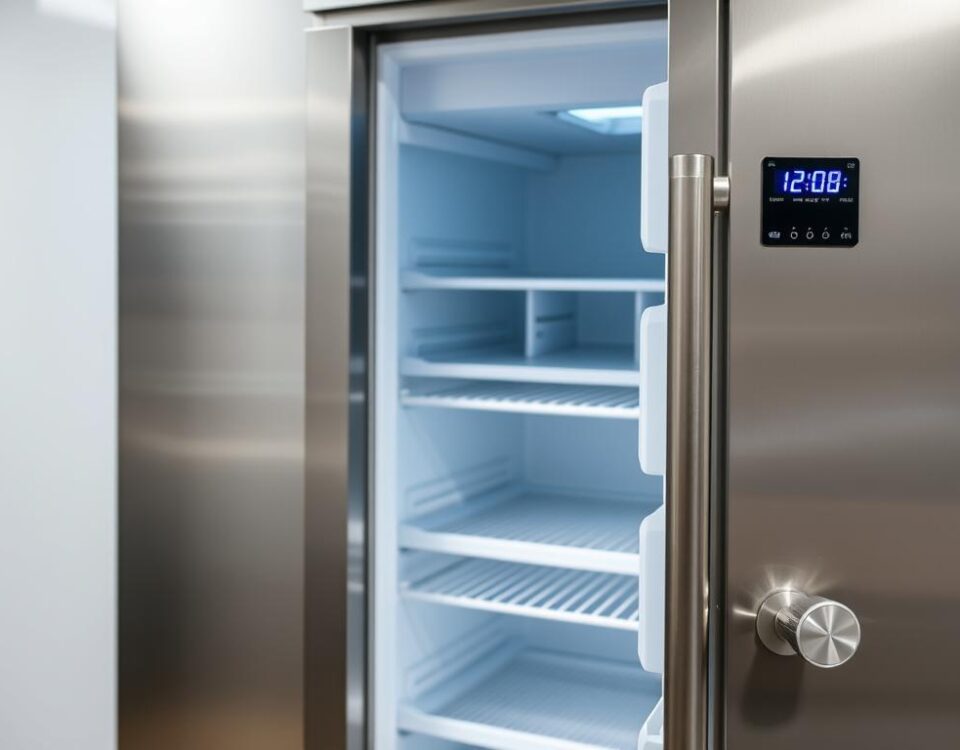
Spring Detox Foods That Cleanse Your Body the Natural Way
May 10, 2025
How to Turn Yesterday’s Dinner into Today’s Delicious Lunch
May 10, 2025Did you know 63% of Americans have uneaten food sitting in their fridge right now? That’s enough to fill 3.5 million garbage trucks annually. Yet here’s the twist: those forgotten containers hold endless possibilities. Let me show you how to turn “meh” into magnificent.
I used to stare at last night’s chicken like it was a culinary dead end. Then I discovered something magical: reinvention. A cold rotisserie bird became zesty tacos. Roast turkey bones transformed into velvety soup. Even plain rice got a glow-up with crispy edges and fresh herbs.
This journey started in my tiny apartment kitchen, where wasted groceries felt like throwing money away. Now, I treat leftovers as puzzle pieces—each one a chance to create something unexpected. From kid-friendly twists to elegant dinner upgrades, you’ll find ideas here that spark joy (and save cash).
We’ll explore smart techniques like flavor layering and texture contrasts. You’ll learn how to repurpose proteins, grains, and veggies without repeating flavors. Best part? Every dish takes under 30 minutes. Let’s make your fridge the most exciting room in the house.
Key Takeaways
- Repurposing ingredients cuts food waste and grocery costs
- Simple methods like shredding or sautéing revive textures
- Proteins like chicken adapt well to global flavor profiles
- Kid-approved options hide veggies in familiar formats
- Most transformations require basic kitchen tools
- Proper storage keeps ingredients fresh for reinvention
Discovering the Charm of Leftover Meal Recipe Ideas
I used to think reheating last night’s dinner meant soggy textures and faded flavors. Then I learned the secret: ingredients actually improve when treated like building blocks. My Sunday roast potatoes became golden hash browns. Extra pork shoulder turned into tangy barbecue sliders. Even that container of rice? It’s now the star of crispy stir-fries.
Proper storage makes all the difference. I store proteins in airtight containers and grains like rice in shallow dishes for quick cooling. This keeps everything fresh for reinvention. Soups benefit most—that turkey noodle from Tuesday tastes richer two days later as the herbs fully bloom.
| Original Ingredient | Next-Day Creation | Flavor Boosters |
|---|---|---|
| Roast Chicken | Thai Coconut Curry | Lime, Basil, Chili |
| Mashed Potatoes | Crispy Potato Pancakes | Green Onions, Smoked Paprika |
| Steamed Rice | Kimchi Fried Rice | Sesame Oil, Gochujang |
What surprised me most? Simple swaps create gourmet results. A squeeze of citrus brightens heavy meats. Crunchy veggies add contrast to soft grains. Last week’s roasted veggies became a frittata with feta and dill—my kids didn’t recognize their “hated” zucchini!
Your fridge isn’t a food graveyard. It’s a treasure chest waiting for creative keys. Start viewing every container as a first draft rather than a final chapter.
Why I Love Transforming Leftovers
There’s magic in opening my fridge and seeing potential instead of problems. What started as a necessity became my favorite kitchen sport—like culinary jazz where every ingredient gets a solo. My chicken stir-fry from Tuesday? By Thursday, it’s starring in enchiladas with smoked gouda and pickled onions.
Science backs this playfulness. Dishes like lasagna develop deeper flavor profiles as ingredients mingle overnight. Tomato acids soften, herbs infuse oils, and proteins relax into their surroundings. That’s why my beef stew always tastes richer on day two—the broth becomes a velvet hug.
Three things make this process sing:
- Overnight marination turns basic into bold
- Crispy textures revive soft components
- Global spices erase “same meal” fatigue
Last week’s roasted chicken became Vietnamese banh mi bowls using quick-pickled veggies and sriracha mayo. The carcass? Simmered into pho broth that outshone my local takeout spot. “Cooking is time travel,” a chef friend once told me. Leftovers let me revisit flavors with fresh eyes.
This approach saves money and sparks joy. Wilted spinach gets blended into pesto. Stale bread becomes croutons with rosemary salt. Every transformation feels like solving a delicious puzzle—one where the pieces taste better than they did originally.
Essential Tips for Revisiting Yesterday’s Dinner
Transforming familiar flavors into fresh experiences requires strategy. I’ve found three golden rules: tweak textures, amplify aromatics, and embrace contrast. Let’s crack open that fridge with purpose.
Simple Swaps to Boost Flavor
That jar of tomato sauce isn’t just for pasta. Stir it into scrambled eggs with feta, or simmer with chickpeas for shakshuka. Last Tuesday’s roasted potatoes? Toss them in a skillet with smoked paprika and top with fried eggs—suddenly it’s brunch.
Crunchy peppers revive soft grains. Try this: mix cold quinoa with diced jalapeños, lime juice, and cilantro. Leftover marinara sauce becomes enchilada filling when blended with black beans. A squeeze of lemon turns heavy meats bright.
Time-Saving Techniques I Rely On
Sunday prep makes weeknight magic. I batch-cook grains and roast veggies, storing them in labeled containers. When time’s tight, I grab prepped components instead of takeout menus.
My 30-minute rule: any recipe revival must clock under half an hour. Stir-fries excel here—toss protein with fresh garlic and soy sauce while rice reheats. That sad chicken breast? Shred it into tacos with store-bought slaw mix. Dinner saved in 15 minutes.
The secret? View ingredients as flexible friends rather than fixed formulas. Your taste buds—and schedule—will thank you.
Understanding the Versatility of Leftovers
Your fridge holds hidden potential waiting to be unlocked. What looks like random containers might become tomorrow’s star dinner. I once turned roasted root vegetables into a caramelized tart with goat cheese—proof that humble food can wear multiple hats.

From Fridge Staples to Gourmet Dishes
That half-eaten grain bowl? Add toasted nuts and citrus vinaigrette for a vibrant salad. Last night’s roasted chicken becomes today’s French-inspired galette with thyme-infused cream. The secret lies in viewing ingredients as adaptable players rather than fixed recipes.
I discovered this through trial and error. Overripe berries transformed into balsamic-glazed compote for cheesecake. Wilted greens found new life in savory bread pudding. Each version tasted better than the original—like culinary alchemy.
Three principles guide my transformations:
- Contrast textures (creamy + crunchy)
- Layer global spices (smoked paprika to za’atar)
- Add fresh elements (herbs, citrus zest)
This approach turns “basic” into “brilliant.” Your fridge becomes a launchpad for creativity, not a graveyard for forgotten meals. Start small—tomorrow’s masterpiece might be hiding behind yesterday’s lunch.
Revamping Chicken Recipes for Next-Day Delights
Chicken’s blank-canvas quality makes it the ultimate reinvention artist. I’ve turned cold rotisserie birds into everything from zesty banh mi bowls to creamy enchiladas—each version better than the last. The secret? Treating yesterday’s chicken as a flavor sponge rather than a finished product.
My fridge hack: shred remaining poultry while it’s still slightly warm. This preserves moisture and lets seasonings cling better. Toss it with lime juice and chili oil for Vietnamese-inspired salads, or mix with Greek yogurt and dill for sandwich fillings that stay juicy.
My Favorite Leftover Chicken Tricks
Asian-inspired soups shine with next-day depth. Simmer bones with ginger and star anise for pho broth that outshines takeout. Shredded breast absorbs coconut milk and lemongrass beautifully—just add rice noodles and basil. Trusted food blogs swear by this method, and I’ve tested it weekly.
Texture is key. Reheated chicken gets rubbery? Pan-sear it crispy or blend into queso dip with pepper jack cheese. My kids devour “cheesy chicken quesadillas” made from last night’s herb-roasted thighs. A sprinkle of smoked paprika makes all the difference.
Next-day magic happens when flavors marry overnight. That garlicky marinade? It mellows into something richer. Herbed butter soaks deeper into meat fibers. I’ve found soups and grain bowls benefit most—they’re like culinary time capsules waiting to be opened.
Repurposing leftovers isn’t just thrifty—it’s a creativity workout. Your recipe repertoire grows while your trash shrinks. Start viewing that container of chicken as tomorrow’s masterpiece in disguise.
Beef and Other Proteins: A Second Life
Proteins like beef don’t retire after one performance—they’re waiting for an encore. I discovered this when Sunday’s roast became Monday’s vibrant Thai salad, tossed with lime, mint, and crushed peanuts. Even ground varieties shine when reimagined: think stuffed peppers or Korean-inspired lettuce wraps.
Using Roast Beef and More Creatively
That slab of beef from last night’s dinner? Slice it thin for banh mi sandwiches with quick-pickled carrots. Shred leftovers into quinoa bowls with roasted sweet potatoes and tahini dressing. My favorite hack: simmer bones with star anise and ginger for pho broth that rivals restaurant versions.
Texture makes all the difference. Dry ground meat revives in tomato-based sauces, while tougher cuts soften in slow-cooked chili. I once turned extra brisket into smoky burnt ends using honey and smoked paprika—my lunch crew still asks for that recipe.
| Original Protein | New Creation | Flavor Twist |
|---|---|---|
| Roast Beef | Thai Basil Salad | Lime, Fish Sauce, Chili |
| Ground Beef | Stuffed Bell Peppers | Cumin, Cotija Cheese |
| Pork Shoulder | Ramen Toppings | Miso, Soft-Boiled Egg |
Trusted chefs swear by this truth: proteins gain depth when repurposed. That soup you reheated? Add fresh herbs and a squeeze of citrus to trick your taste buds into thinking it’s brand new. Your dish isn’t repeating—it’s evolving.
Innovative Rice and Pasta Creations
Grains and noodles become culinary chameleons when given a second act. I’ve turned cold rice into crispy Korean bibimbap bowls and transformed plain spaghetti into brunch-worthy frittatas. The key? Treating these staples as foundations rather than final products.
Rice Reinventions for Bold Flavors
Day-old grains shine when paired with contrasting textures. My go-to move: sauté cold rice with garlic until golden, then toss with pineapple and cashews for sweet-savory magic. For creamy comfort, mix it with coconut milk and turmeric—instant golden “risotto” without the stirring marathon.
| Original Rice | New Creation | Texture Tip |
|---|---|---|
| Jasmine | Mango Sticky Bites | Pan-sear for crisp edges |
| Brown | Stuffed Peppers | Mix with black beans |
| Sushi | Breakfast Pudding | Simmer in almond milk |
Pasta Perfection from Last Night’s Dinner
That linguine from Tuesday’s dinner? Chop it into bite-sized pieces for a carbonara frittata. Toss cold penne with pesto and roasted tomatoes—the olive oil clings better to cooled noodles. My secret weapon? A splash of pasta water revives sauces without making dishes soggy.
Balance is everything. Creamy sauces pair well with crunchy toppings like toasted breadcrumbs. Tangy vinaigrettes cut through rich cheeses. Last week’s rigatoni became a baked casserole with spinach and feta—my family thought I’d cooked for hours.
| Pasta Type | Next-Day Twist | Sauce Pairing |
|---|---|---|
| Spaghetti | Frittata Cubes | Marinara dip |
| Farfalle | Cold Salad | Lemon-tahini |
| Macaroni | Cheese Muffins | Sriracha mayo |
Don’t fear experimentation. As chef Julia Child once said: “No one is born a great cook—they learn by doing.” Your fridge holds endless flavor possibilities. Start with one container and see where your taste buds lead.
Stirring Up Flavor in Soups and Stews
My kitchen smells like a cozy café when I transform odds and ends into soul-warming creations. Last week’s roasted vegetables and chicken bones became a golden broth that fueled three different soup variations. This magic happens through two approaches: patience and speed.
Slow Cooker Magic for Richness
I discovered stews gain depth when ingredients simmer all day. Toss leftover beef, carrots, and thyme into your pot with red wine. Let it cook on low for 6 hours—the collagen breaks down into velvet texture. My favorite hack? Add a Parmesan rind during the last hour for umami richness.
Quick Simmer Solutions for Busy Evenings
When time’s tight, I use high heat and bold flavors. Sauté garlic in olive oil, then deglaze with tomato sauce. Throw in shredded turkey and white beans—dinner’s ready in 15 minutes. For kick, stir in chipotle chili powder and lime zest.
| Method | Time | Key Ingredient |
|---|---|---|
| Slow Simmer | 4-6 hours | Bone broth |
| Pressure Cook | 45 minutes | Lentils |
| Quick Boil | 20 minutes | Frozen veggies |
Don’t fear experimentation. That half-used jar of marinara? It became minestrone’s base with kale and cannellini beans. Soups forgive imperfect measurements—taste as you go and adjust. Your pot is the canvas; every stir adds character.
Bright and Crisp Salad Upgrades
A dull salad became my canvas for kitchen experiments last summer. I discovered cold roasted veggies and proteins gain new life when paired with crunchy greens. The trick? Treating your bowl like a flavor playground where textures and temperatures collide.
Warm components add depth to raw bases. Toss yesterday’s grilled chicken with arugula and shaved Parmesan—the heat wilts greens slightly, creating silky contrast. For tangy twists, I drizzle citrus vinaigrette over chilled shrimp and watermelon radishes.
| Original Protein | Salad Creation | Texture Additions |
|---|---|---|
| Rotisserie Chicken | Mediterranean Bowl | Toasted Pine Nuts |
| Pan-Seared Steak | Asian Noodle Salad | Crispy Wonton Strips |
| Baked Salmon | Kale Caesar | Sourdough Croutons |
| BBQ Tofu | Southwest Fiesta | Tortilla Chip Crumbles |
Crunch is non-negotiable. I keep sunflower seeds and fried shallots ready for instant upgrades. A handful transforms soft ingredients into satisfying bites. My kids now beg for “confetti salads” with colorful veggie ribbons and crispy chickpeas.
Balance makes magic happen. Pair room-temperature grains with icy cucumbers. Mix roasted sweet potatoes with raw spinach. Last night’s dinner becomes today’s star through smart contrasts—no fancy recipe required. Your bowl should sing with every forkful.
Cheesy Casseroles and Comfort Dishes
Winter nights taught me the power of melted cheese to turn fridge odds into cozy masterpieces. My “clean-out-the-fridge” casseroles became family legends—dishes where every bite feels like a warm hug.

Layered Lasagna Love
Day-old lasagna isn’t just good—it’s better. Chilling lets flavors merge like old friends. I layer extra marinara with spinach between noodles, then blanket it with ricotta and mozzarella. The secret? A sprinkle of cornstarch prevents sauce separation during reheating.
Baked Potato Reimaginings
Cold spuds get crispy makeovers. I chop baked potato skins into coins, then bake them with cheddar and chives. The fluffy insides become a creamy base for bacon-studded breakfast casseroles. Pro tip: Patatoes dry before mixing to avoid sogginess.
| Component | Texture Trick | Cheese Pairing |
|---|---|---|
| Pasta | Undercook by 2 minutes | Fontina |
| Potatoes | Roast before baking | Gruyère |
| Vegetables | Sauté to reduce moisture | Parmesan |
Balance makes comfort sing. I top creamy mixtures with panko tossed in garlic oil. Crunchy lids contrast velvety centers—your spoon will keep diving back in. These dishes prove humble ingredients can become showstoppers with a little heat and imagination.
Global Inspirations: Spicing Up Old Favorites
Ever thought your fridge could take you on a world tour? I discovered international flavors breathe new life into familiar ingredients. My breakthrough came when Tuesday’s roasted veggies became Wednesday’s Thai curry—proof that borders exist only in our spice racks.
Asian-Inspired Remakes for a Twist
Cold proteins transform with bold marinades. I toss shredded chicken with lemongrass, fish sauce, and red chili flakes for Vietnamese salads. Leftover rice becomes kimchi pancakes when mixed with gochujang and scallions. The secret? Let ingredients soak overnight—flavors deepen like aged wine.
Mexican Flair with Existing Ingredients
That jar of tomato sauce isn’t just for pasta. Simmer it with cumin and chipotle chili powder for enchilada filling. I layer tortillas with roasted squash, black beans, and crumbled queso fresco. Pro tip: Pan-fry tortillas until crispy—they hold up better than store-bought shells.
| Cuisine | Twist | Flavor Boost |
|---|---|---|
| Thai | Curried Noodles | Coconut Milk + Lime Zest |
| Mexican | Street Tacos | Pickled Onions + Cotija |
| Indian | Spiced Bowls | Garam Masala + Yogurt |
Chef Roy Choi once said: “Fusion isn’t a trend—it’s how hungry people solve problems.” My fridge raids prove this daily. Last week’s pot roast became birria tacos with a rich consommé dip. The recipe took 20 minutes but tasted like a Cancún beach shack special.
Don’t fear bold combinations. Mix Korean gochugaru with Italian herbs. Blend harissa into salsa verde. Your taste buds will thank you—and those containers? They’ll feel like passport stamps.
Quick Fixes for Busy Weeknights
Busy evenings don’t have to mean boring dinners. My secret? Treating yesterday’s ingredients like puzzle pieces. That roasted chicken becomes zesty tacos in 10 minutes—just shred, toss with lime, and pile onto charred tortillas. Cold quinoa? Pan-fry it with garlic and frozen peas for a fried rice facelift.

I keep a “flavor booster” station: small jars of toasted nuts, citrus zest, and infused oils. A sprinkle transforms basic components into lunch-worthy bowls. Last Tuesday’s roasted veggies got new life as a wrap with hummus and pickled onions—prepped during my morning coffee.
Three rules save me time:
- Reheat proteins in a skillet, not microwave (crispy edges matter)
- Pair soft ingredients with crunchy toppings
- Use bold condiments to mask “day-old” textures
Sunday prep is key. I batch-cook grains and roast extra veggies—they’re the base for next day stir-fries or grain bowls. My favorite hack? Simmering leftover broth with miso and ginger for instant ramen upgrades. Dinner’s ready before the takeout app loads.
Remember: Speed doesn’t sacrifice flavor. Your fridge holds shortcuts—you just need the right combos. Tonight’s masterpiece might already be waiting behind that jar of pesto.
Creative Uses for Leftover Sauces and Sides
Ever stared at half-used condiments wondering if they’re destined for the trash? I’ve turned forgotten jars into kitchen gold. That lingering marinara becomes shakshuka’s base with eggs and smoked paprika. Soy sauce? Mix it with honey and sesame oil for glazed salmon that outshines takeout.
Side dishes hold hidden potential. Last week’s roasted veggies starred in a frittata with feta and dill. Cold quinoa transformed into crispy patties with garlic aioli. The trick? Treat sides as flavor foundations rather than afterthoughts.
| Original Sauce/Side | New Creation | Flavor Hack |
|---|---|---|
| Pesto | Grilled Cheese Spread | Add sun-dried tomatoes |
| Mashed Potatoes | Croquetas | Roll in panko |
| BBQ Sauce | Pulled Pork Tacos | Toss with pickled onions |
Simple swaps make magic. Stir ranch dressing into mashed avocados for zesty dip. Blend hummus with lemon juice to revive wilted greens. My favorite move? Simmering teriyaki sauce with coconut milk for instant curry depth.
Don’t overthink it. That jar of Alfredo becomes tomorrow’s creamy risotto base. Stale breadcrumbs? Toast them with herbs for crunchy salad toppers. Your food isn’t leftover—it’s prepped for greatness.
Meal Planning to Reduce Waste and Save Time
My fridge used to be a graveyard—now it’s a treasure map. I discovered meal planning turns forgotten ingredients into intentional feasts. Last month’s roasted veggies became Tuesday’s frittata and Thursday’s grain bowls. No more staring at wilting greens wondering “What’s for dinner?”
Here’s my blueprint: Sunday nights, I sketch a flexible menu using existing food. That half-eaten rotisserie chicken? Monday’s tacos and Wednesday’s curry. Extra rice becomes Friday’s fried rice with scrambled eggs. This approach cuts grocery trips by 30% in my household.
Three strategies keep me on track:
- Label containers with potential uses (“soup base” or “stir-fry booster”)
- Pair proteins with global spices to avoid flavor fatigue
- Designate one night for “remix recipes” using accumulated bits
| Last Night’s Dinner | Next-Day Creation | Time Saved |
|---|---|---|
| Roasted Chicken | BBQ Sliders | 22 minutes |
| Steamed Vegetables | Frittata Bites | 17 minutes |
| Pasta Primavera | Cold Salad | 9 minutes |
Trusted chefs like Alice Waters emphasize: “Great cooking favors the prepared mind.” I’ve found pre-chopped herbs and batch-cooked grains turn leftover magic into 15-minute miracles. My kids now request “surprise bowls” made from yesterday’s components.
This isn’t just thrifty—it’s liberating. Your week gains structure while your creativity flourishes. Start small: tomorrow’s masterpiece might be hiding behind tonight’s roasted carrots.
Tips for Storing and Reheating Leftover Creations
Glass containers changed how I preserve flavors overnight. After trial and error, I discovered proper storage turns “meh” into magnificent. Trusted food blogs taught me airtight glass keeps ingredients vibrant longer than plastic.
Proper Storage Techniques I Trust
I store proteins in shallow dishes to cool faster. Grains go in portioned jars for grab-and-go upgrades. Herbs stay crisp in damp paper towels. For cream-based dishes, I press parchment paper directly on surfaces to prevent skin formation.
| Container | Best For | Max Freshness |
|---|---|---|
| Glass Jars | Sauces, Grains | 5 Days |
| Silicone Bags | Roasted Veggies | 4 Days |
| Cast Iron | Braised Meats | 3 Days |
Reheating for Optimal Taste and Texture
Microwaves murder textures. I reheat proteins in skillets with broth splashes. Creamy dishes revive in double boilers—stirring constantly prevents curdling. For crispy elements, use air fryers at 375°F for 90 seconds.
| Dish Type | Method | Pro Tip |
|---|---|---|
| Creamy Pasta | Steam Basket | Add splash of milk |
| Roasted Veggies | Oven + Oil Spritz | Toss with lemon zest |
| Tomato Sauce | Sauté Pan | Finish with fresh basil |
My golden rule? Treat reheating as finishing touches. That last-minute herb sprinkle or citrus squeeze makes yesterday’s dinner feel brand new. Your fridge isn’t a time capsule—it’s a flavor incubator waiting for final polish.
Conclusion
Your next gourmet creation might be hiding behind yesterday’s dinner. Through this journey, we’ve seen how simple ingredients like chicken, beef, and rice become global flavors with just a sprinkle of creativity. That container of soup? Tomorrow’s velvety pasta sauce. Those roasted veggies? A frittata bursting with herbs.
Every dish holds potential. Whether you’re crisping potatoes into golden pancakes or simmering shredded chicken with coconut milk, the magic lies in experimentation. I’ve learned that proper storage and bold spices turn “basic” into “brilliant”—no fancy tools required.
Try one idea this week. Swap that rice into fried grain bowls, or layer last night’s beef into zesty tacos. Your fridge isn’t a graveyard—it’s a launchpad for flavor adventures. With smart planning, you’ll slash waste and rediscover joy in everyday cooking.
Thank you for exploring these kitchen transformations with me. Now go conquer those containers—your tastiest dish yet awaits!
FAQ
How do I safely reuse cooked chicken in new dishes?
I always store cooked chicken in airtight containers within two hours of cooking. When reheating, I make sure it reaches 165°F. My go-to moves? Toss it into tacos, mix it with mayo for sandwiches, or simmer it in broth for a quick soup.
Can I turn leftover rice into something exciting?
Absolutely! Fried rice is my favorite hack—just sauté with veggies, soy sauce, and a scrambled egg. Or stuff bell peppers with seasoned rice, top with cheese, and bake. Day-old rice works best because it’s less sticky!
What’s your trick for keeping casseroles from tasting dry?
I add a splash of broth, cream, or tomato sauce to revive moisture. For example, mixing a creamy soup like Campbell’s® into baked potatoes or layering extra cheese in lasagna keeps everything rich and flavorful.
How can I use leftover sauces without wasting them?
Marinara becomes pizza sauce, gravy transforms shepherds pie, and pesto jazzes up pasta salads. I freeze small portions in ice cube trays for quick future meals—like adding a “flavor bomb” to soups or stir-fries.
What proteins work best for remixing into new meals?
Beef roast shines in chili or quesadillas, while shredded pork pairs with BBQ sauce for sliders. Even grilled salmon can be flaked into chowder. I focus on bold spices or contrasting textures to make the dish feel全新.
Any tips for reheating without losing texture?
For crispy foods like fries or breaded chicken, I use an air fryer instead of the microwave. Soups and stews get reheated on the stove with a splash of water to prevent thickening. And always cover mashed potatoes to avoid a skin forming!
How long can I keep leftovers in the fridge before repurposing?
I stick to 3–4 days max for most proteins and cooked grains. If I won’t use them by then, I freeze them. Label containers with dates—my freezer’s full of chili, broth, and even taco meat ready for a second act!



